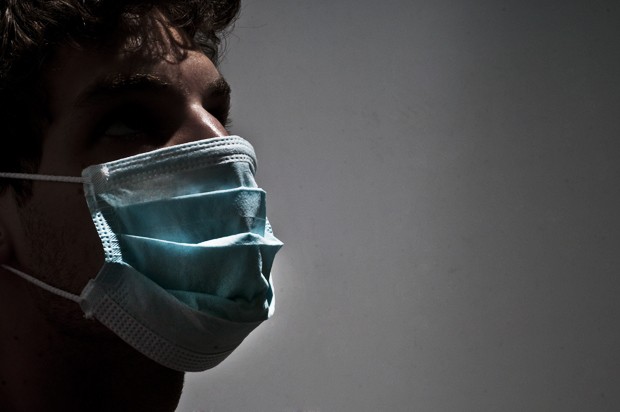A serious outbreak of H1N1 influenza in Minnesota schools is likely as class begins, University of Minnesota and state health officials predict. Schools in the southern United States that began in mid-August have had about 18 percent of students and 12 percent of teachers absent due to H1N1 influenza, State Health Commissioner Sanne Magnan said. This is an âÄúimportant reminder of what is coming to Minnesota,âÄù Magnan said. Minnesota schools have already seen a âÄúsubstantial increaseâÄù in the number of H1N1 infections, , also known as Swine Flu, in the past three weeks, and up to 30 percent of students could become infected in the next three to four weeks, Dr. Michael Osterholm, Director of the Center for Infectious Disease Research and Policy at the University, said. As of Sept. 3, there have been 263 H1N1 hospitalizations in Minnesota and three deaths, according to the Minnesota Department of Health. A vaccine is being developed that will be administered in two shots, and will be available in mid-October, Magnan said. Minnesota will receive 65 million doses in the first batch and 20 million every week thereafter, Magnan said. The vaccine will be available at Boynton Health Services in October, but Osterholm said this may be âÄútoo late,âÄù as the outbreak will likely occur before then. Pregnant women, health care workers and people under 25 will be among the first groups to receive the vaccine, Magnan said. In the meantime, the University prepared for the pandemic by promoting public health and raising awareness of how infectious diseases spread. The âÄúCover your Cough,âÄù campaign, created by the Minnesota Department of Health, is another common reminder from University officials. To combat the spread of H1N1 in the dorms the University is urging students who live nearby to have their parents pick them up and to remain at home until they feel better, which could take three to seven days, Dean of the School of Public Health John Finnegan said. Students who arenâÄôt able to make it home should isolate themselves in their rooms, âÄúdonâÄôt go to class for goodness sake,âÄù Finnegan said. âÄúOne person coughs on you and youâÄôre out of luck,âÄù Gib Clarke, coordinator of the Woodrow Wilson International Center for ScholarsâÄô Global Health Initiative, said. However, by the time students start showing symptoms, it is likely their roommates will have already been infected, Osterholm said. According to the UniversityâÄôs emergency operations plan , if classes are cancelled the University will determine whether enough class time has been held in order for the semester to be certified as complete and for grades to be assigned. The University may also alter the calendar, including using break time, in order to complete the semester. The University residence halls will remain open and operational unless occupancy of the hall approaches 30 percent. If the occupancy drops below 30 percent students will be moved to another residential facility, according to the plan. The H1N1 influenza, which shares many characteristics of seasonal influenza âÄî fever, muscle aches, sore throat âÄî has differed in its seasonal timing and targeted age range. The first wave of H1N1 influenza hit Minnesota in April, when seasonal influenza was tapering off, and the second wave is expected much sooner than the normal onset of seasonal influenza, which hits around November. Wisconsin has already been hit with a wave of the influenza to start off the school year. According to the University of Wisconsin-MadisonâÄôs University Health Services (UHS), there were 198 students who were evaluated and determined to have an influenza-like illness from Aug. 31-Sept. 5. Of those, about 30, or 15.4 percent were treated in the UHS primary care clinic; rates of more than 4 percent are considered to be high. According to the University of Wisconsin-MadisonâÄôs H1N1 Information and Prevention website, preliminary testing results indicated that 81 percent of those students with an influenza-like illness tested positive for H1N1, with testing yet to be completed. Seasonal flu primarily infects people 65 or older. However, people under the age of 25 are at a higher risk of catching the virus, because of the immaturity of their immune system, Osterholm said. The average age of someone infected with H1N1 is 11 years old, Magnan said. The H1N1 influenza carries a mixture of human, pig, and bird DNA, which hasnâÄôt been seen before. This makes the virus an unpredictable âÄúquick change artist,âÄù Magnan said. It will be a âÄúrock and rolling semester,âÄù but the University will try to continue business as normal, Finnegan said. Finnegan, Magnan and Osterholm will be participating in a panel discussion on the âÄúGlobal Impact of H1N1 Flu VirusâÄù at the Coffman Union Theater Thursday.

H1N1 outbreak predicted at U
Infection rate could reach 30 percent among students in the next month. A vaccine will become available in mid-October.
Published September 8, 2009
0

